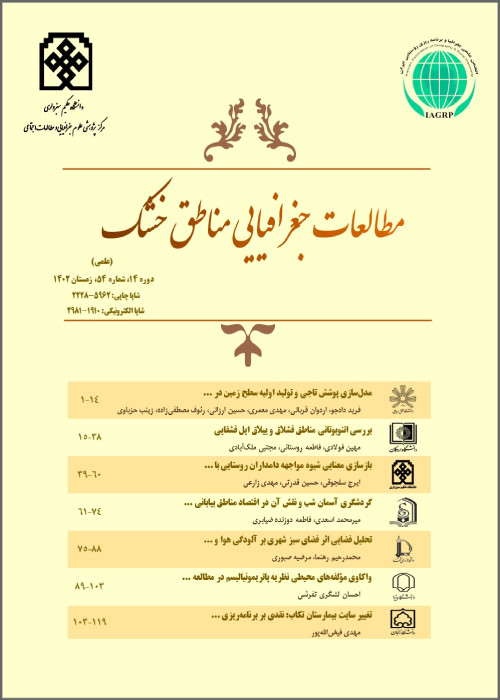Forecast, Tabriz, annual temperature, time series, model
The main purpose of this research was to model the temperature data of Tabriz synoptic station with the help of an integrated auto-correlated moving statistical model in time coverage of 1951-2020.
First, pre-processing was done on the studied data; in the next step, in order to analyze a time series and build a suitable model were exerted three Box-Cox methods, the first-order difference method and the least square method for stationery to decide on the best model based on the autocorrelation and partial autocorrelation diagrams, the minimum Akaic information criterion (AIC) and the Bayesian information criterion (BIC). Next, in order to ensure the appropriateness of the best-selected model were also applied normal probability diagrams, residuZ2`2als against time, autocorrelation and partial autocorrelation, Kolmogorov-Smirnov test and evaluation criteria (MAE), (MSE), (RMSE) and (NRMSE).
While time series models are a suitable method for modeling climatic parameters, by examining the efficiency of the Box-Cox, first-order differential, and least squares stationery methods for the temperature data of Tabriz, it was determined that the first-order differential method is the best stationery method for the annual temperature data of Tabriz synoptic station due to having the lowest slope of the fitting line and the complete elimination of autocorrelation between temperature values.
The results of this research showed that the ARIMA (0, 1, 1) Con model is the most suitable model for temperature forecasting of the coming years. Therefore, the average annual temperature of Tabriz synoptic station will increase in the next 18 years.
Innovation:
In this research, the effectiveness of different stabilization methods was simultaneously evaluated for Tabriz Synoptic station in order to remove the trend, so that by evaluating the performance of different data stabilization methods and different models of the ARIMA family, the appropriate model for temperature forecasting can be determined and a clearer picture of the temperature conditions in the future can be obtained and its results can be exrted in related planning.
- حق عضویت دریافتی صرف حمایت از نشریات عضو و نگهداری، تکمیل و توسعه مگیران میشود.
- پرداخت حق اشتراک و دانلود مقالات اجازه بازنشر آن در سایر رسانههای چاپی و دیجیتال را به کاربر نمیدهد.


